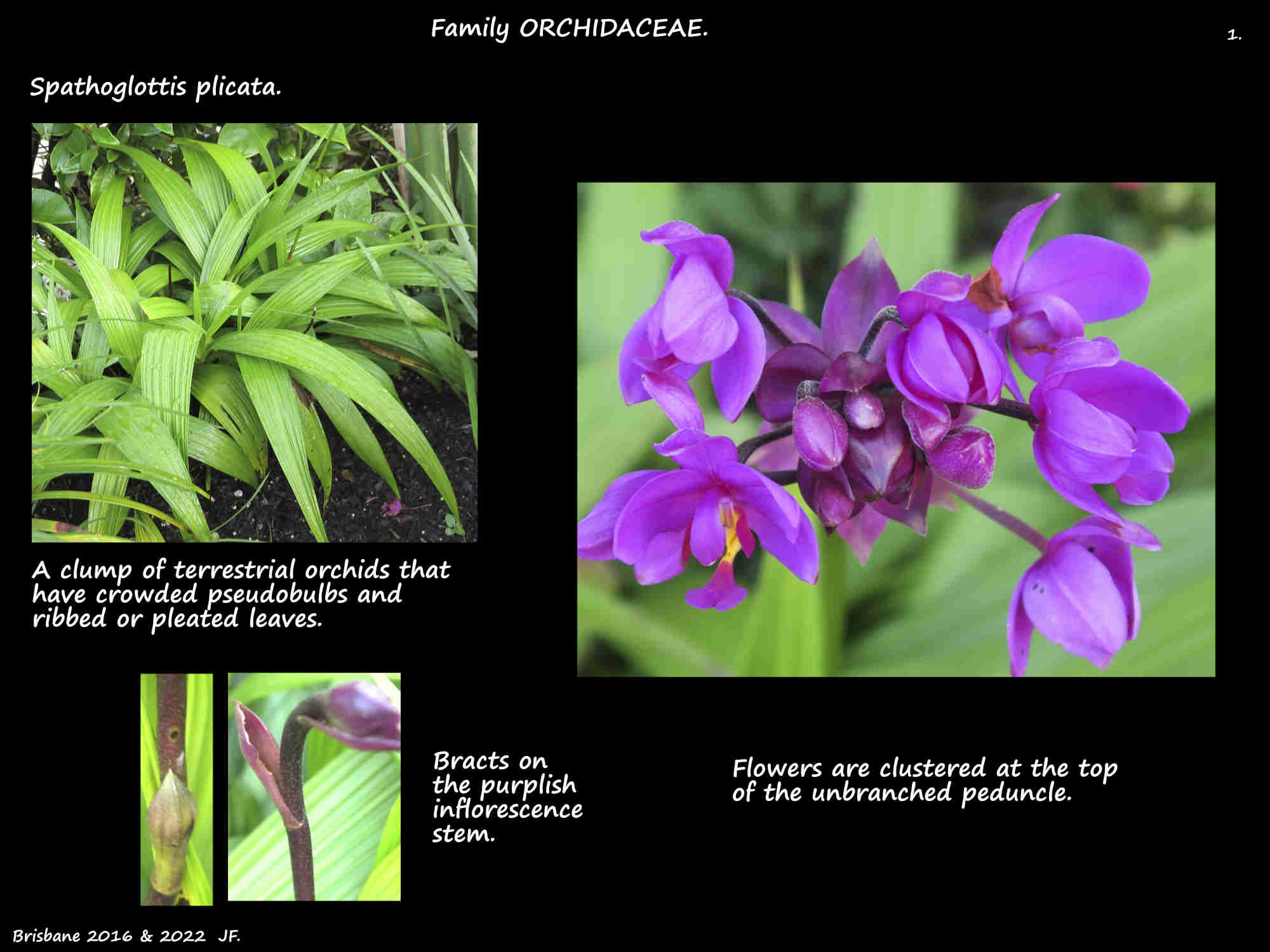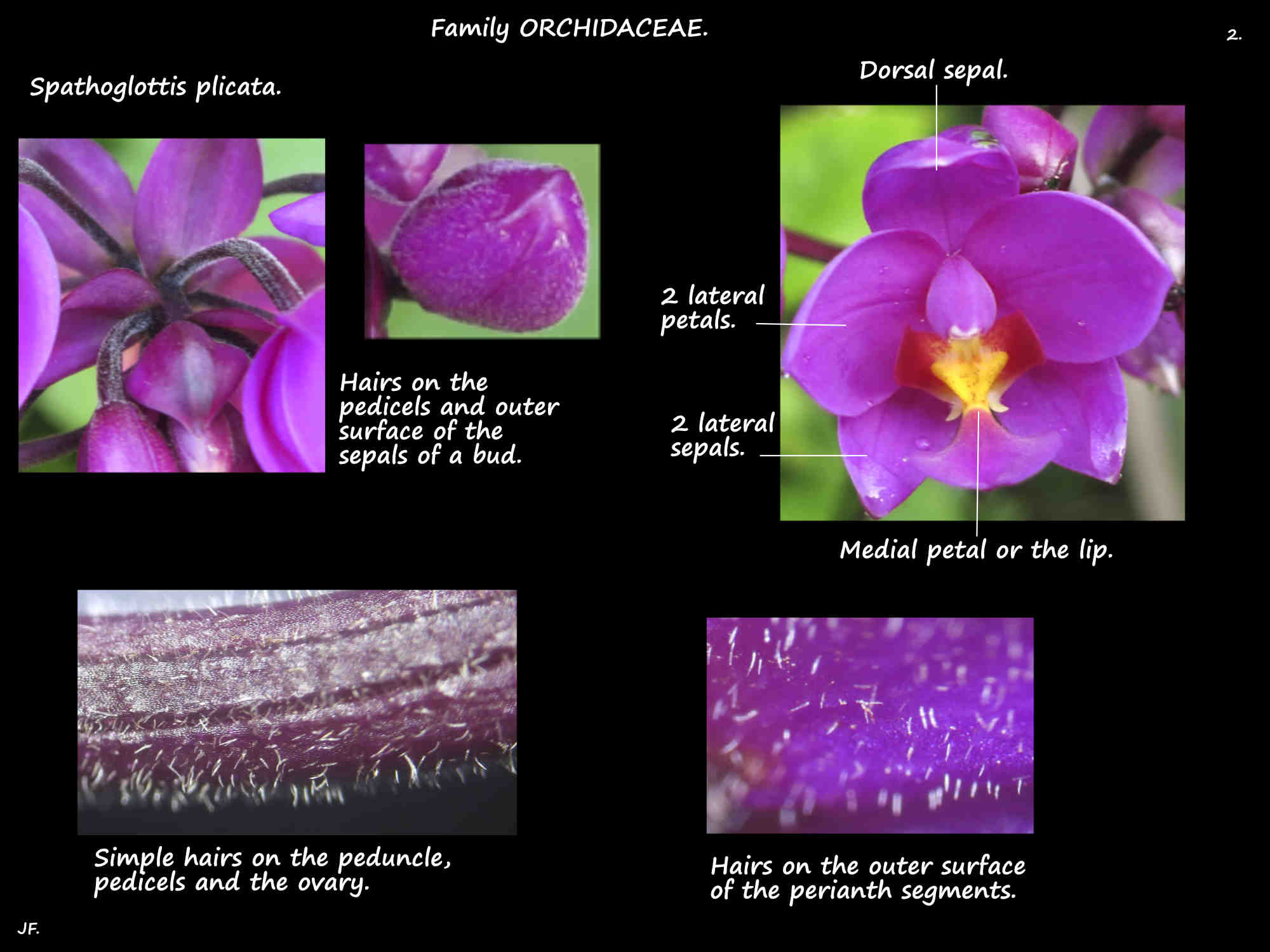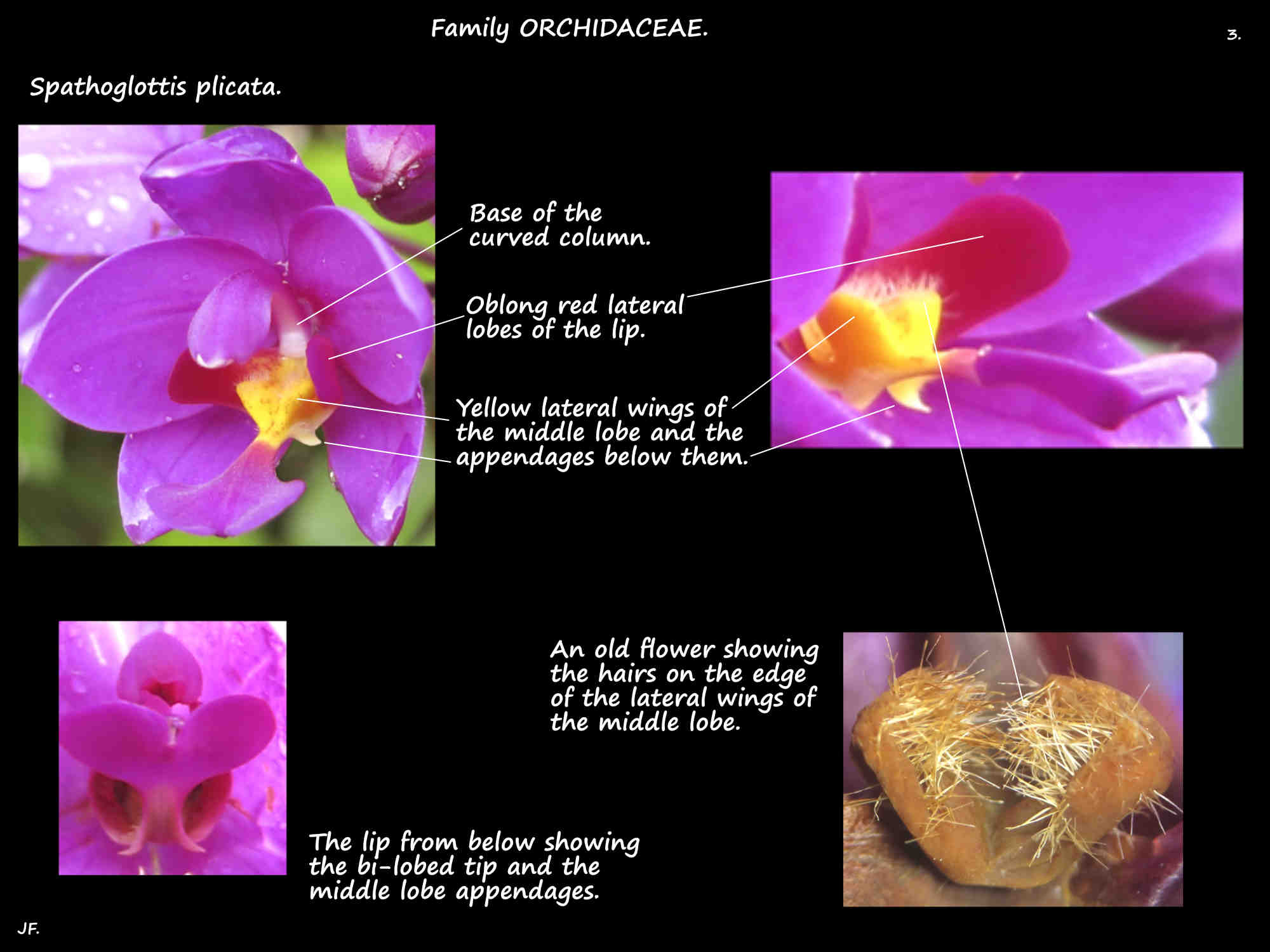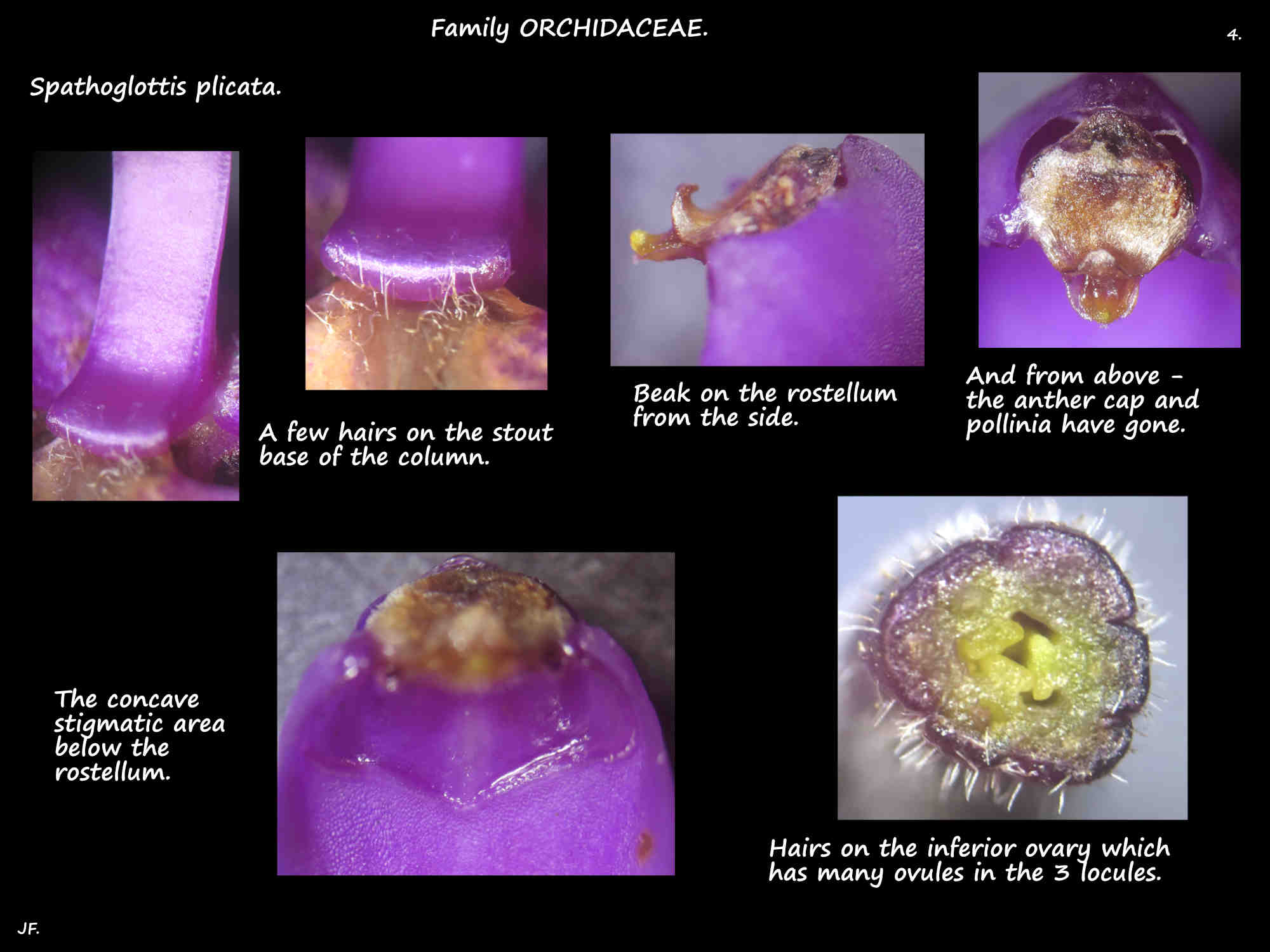Spathoglottis plicata.
Family Orchidaceae > Subfamily Epidendroideae.
There are 45 to 50 Spathoglottis species some of which occur in northern Australia.
Spathoglottis plicata, the Ground Orchid, is one of the most commonly seen.
They are erect, evergreen terrestrial orchids up to 50 cm high.
They have crowded, multinoded, fleshy pseudobulbs.
Each pseudobulb has only a few long, arching, spirally arranged leaves.
Leaf bases taper, the tips are pointed and the blade is strongly ribbed or pleated.
Lower leaves may be reduced to bracts sheathing the stem.
Erect, unbranched axillary inflorescences arise from the base of the plant and have few to many flowers at the top.
Each resupinate flower is on a stalk which has a bract at the base.
Colours include purple, pink, yellow and rarely white.
The perianth segments are free of each other and usually widely spread.
There is no spur.
The dorsal sepal is narrower than the laterals and is erect or curved inwards.
The sepals are hairy on the outside.
The ovate petals are usually smaller than the sepals.
In most species the forward projecting lip has 3 lobes and is attached to the base of the column.
The lateral lobes vary from large to small and can be curved inwards or outwards.
The broad middle lobe has a narrow base.
Spathoglottis plicata has small, downward curving, ear-shaped appendages on the sides of the middle lobe’s narrow base.
Also on the narrow base of the middle lobe are 2 raised calli.
These may be separate or joined, and slightly hairy.
The column has little or no wings.
The stigma is convex, the rostellum is narrow and there is no viscidium.
There are 8 unequal pollinia in 2 groups of 4.
Dehiscent, 6 ribbed capsules up to 2.5 cm long release thousands of tiny seeds.
J.F.






